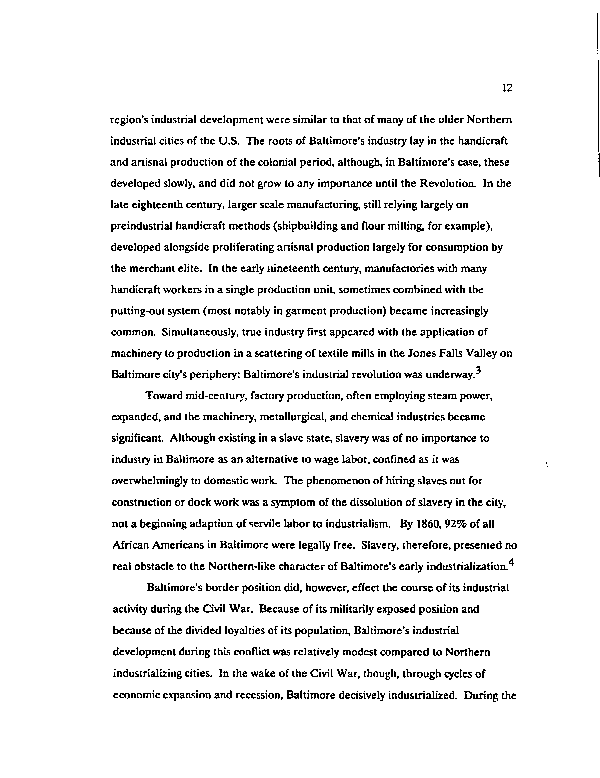|
12
region's industrial development were similar to that of many of the older Northern
industrial cities of the U.S. The roots of Baltimore's industry lay in the handicraft
and artisnal production of the colonial period, although, in Baltimore's case, these
developed slowly, and did not grow to any importance until the Revolution. In the
late eighteenth century, larger scale manufacturing, still relying largely on
preindustrial handicraft methods (shipbuilding and flour milling, for example),
developed alongside proliferating artisnal production largely for consumption by
the merchant elite. In the early nineteenth century, manufactories with many
handicraft workers in a single production unit, sometimes combined with the
putting-out system (most notably in garment production) became increasingly
common. Simultaneously, true industry first appeared with the application of
machinery to production in a scattering of textile mills in the Jones Falls Valley on
Baltimore city's periphery: Baltimore's industrial revolution was underway.^
Toward mid-century, factory production, often employing steam power,
expanded, and the machinery, metallurgical, and chemical industries became
significant Although existing in a slave state, slavery was of no importance to
industry in Baltimore as an alternative to wage labor, confined as it was
overwhelmingly to domestic work. The phenomenon of hiring slaves out for
construction or dock work was a symptom of the dissolution of slavery in the city,
not a beginning adaption of servile labor to industrialism. By 1860, 92% of all
African Americans in Baltimore were legally free. Slavery, therefore, presented no
real obstacle to the Northern-like character of Baltimore's early industrialization.
Baltimore's border position did, however, effect the course of its industrial
activity during the Civil War. Because of its militarily exposed position and
because of the divided loyalties of its population, Baltimore's industrial
development during this conflict was relatively modest compared to Northern
industrializing cities. In the wake of the Civil War, though, through cycles of
economic expansion and recession, Baltimore decisively industrialized. During the
|

